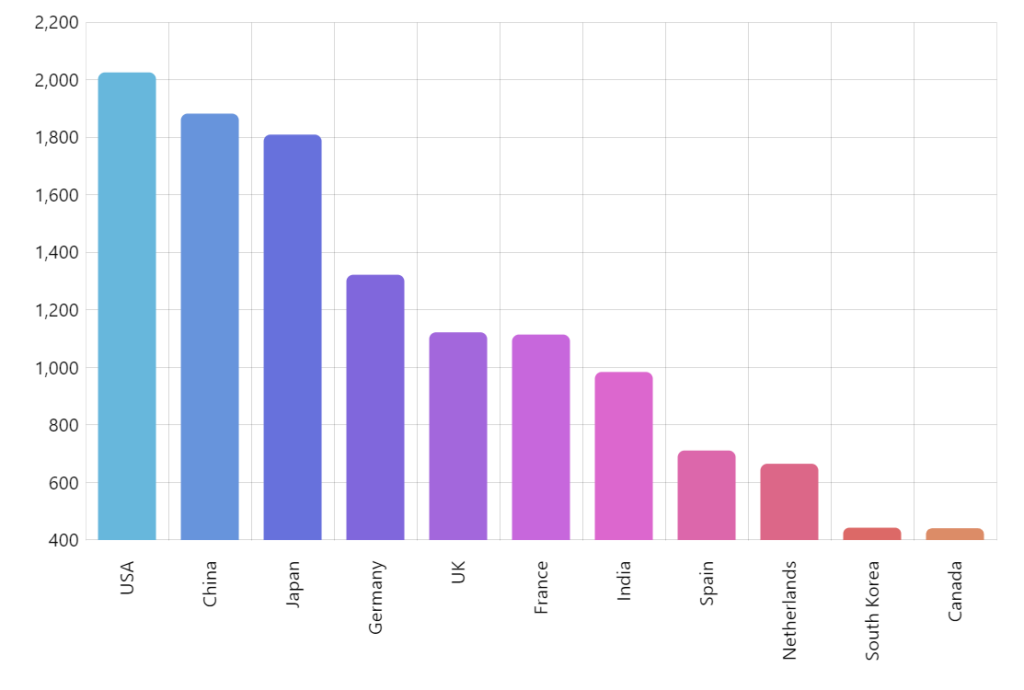UK National Accounts, 3rd Quarter 2023: Just before the Christmas break, the Office for National Statistics (ONS) published the national accounts for the 3rd quarter. This main headline was the downgrading of the GDP data for the 3rd quarter from aero (actually negative but not by enough to see at one decimal point) to a fall of -0.1%. There is more significance in the fact that the trend is now negative than there is in the actual revision to the data.
Of course, this raises the prospect that the UK economy could have a recession in the 2nd half of 2023 and, perhaps into this year. In reality, if it does, technically, occur, it will be very marginal and now like historical period of even modest recessions. Excluding the exceptional events of the Covid-pandemic and the Global Financial Crisis, you have to go back to 1990-92 to find the last recession in the UK economy. This was actually a two-part recession interrupted by a small positive figure for Q4-1991 and from Q1-1990 (the first with a contraction in GDP) to Q2-1992 (the last negative), the cumulative reduction in UK GDP was -2.5%; even the most pessimistic views this time around (and we are not there yet), would suggest that a contraction of -1% would be beyond the worst-case scenario.
There was also a downward revision to GDP for the 2nd quarter of this year which is now also flat (in this case marginally positive but not enough to round-up at one decimal point), having been +0.2% in the previous data release.
There have also been revisions to the data for manufacturing output but the net effect across the first 3 quarters of 2023 is minimal.
However, perhaps the most relevant piece of information in this data release are the updated figures for business investment, including the breakdown by broad industry categories. The quarter-on-quarter downturn in business investment has been revised “up” to -3.2% (it had been -4.2% in the first estimate. However, spending on ICT & Other Machinery has been moved back to -3.7% from -3.2%; as a result, this category of asset now accounts for 28.0% of total business investment (the lowest proportion since Q1-2020.
But most importantly, we get the first view of the investment data for the manufacturing sector. Total manufacturing investment fell by -1.5% compared to the 2nd quarter but was +0.1% above the level a year ago; the engineering & vehicles industries accounted for 43% of total manufacturing investment although the figure was -5.2% lower than in the previous quarter and -7.1% down on Q3-22.
We can also look at the rolling 4-quarter trend and on this measure, manufacturing investment fell by -0.5% with the subset of engineering & vehicles down by -0.9%.
You can download the ONS Statistical Bulletin for the National Accounts from their website at https://www.ons.gov.uk/releasecalendar (22 December) or request it from MTA.
—————————————-
CBI Industrial Trends Survey, December 2023: The results of the December** survey showed that output volumes were unchanged in the three months to December** with a weighted balance of 0% (from -17% in the 3 months to November**). This is the first-time output hasn’t fallen since the quarter to July** 2023 and output is expected to rise marginally in the 3 months to March** (+5%).
Output rose in 6 out of 17 sub-sectors in the three months to December, including the food, & drink, paper, printing & media and electrical goods sub-sectors but output fell in the chemicals, mechanical engineering and metal products sub-sectors.
Total order books were reported as below “normal” in December**, but they did improve relative to last month (-23% from -35%) – the level of order books remained below the long-run average (-13%). Export order books were also seen as below normal and also improved relative to last month (-23% from -31%) –this was again below the long-run average (-18%).
Stocks of finished goods were seen as more than “adequate” in December (+11% from +3% in November), the highest reading in 6 months.
* Note: Although dated December, the data collection period ran from 23rd November to 11th December so, despite the holiday break, it really covers the trends in November, the three months ending then (September, October and November) and the following 3 months (December 2023, January and February 2024). The same principal applies to all other references to months.
The Press Release of the CBI ITS is available from their web-site at https://www.cbi.org.uk/media-centre/ (19 December) or on request from MTA (we can also provide a brief summary of the results).

